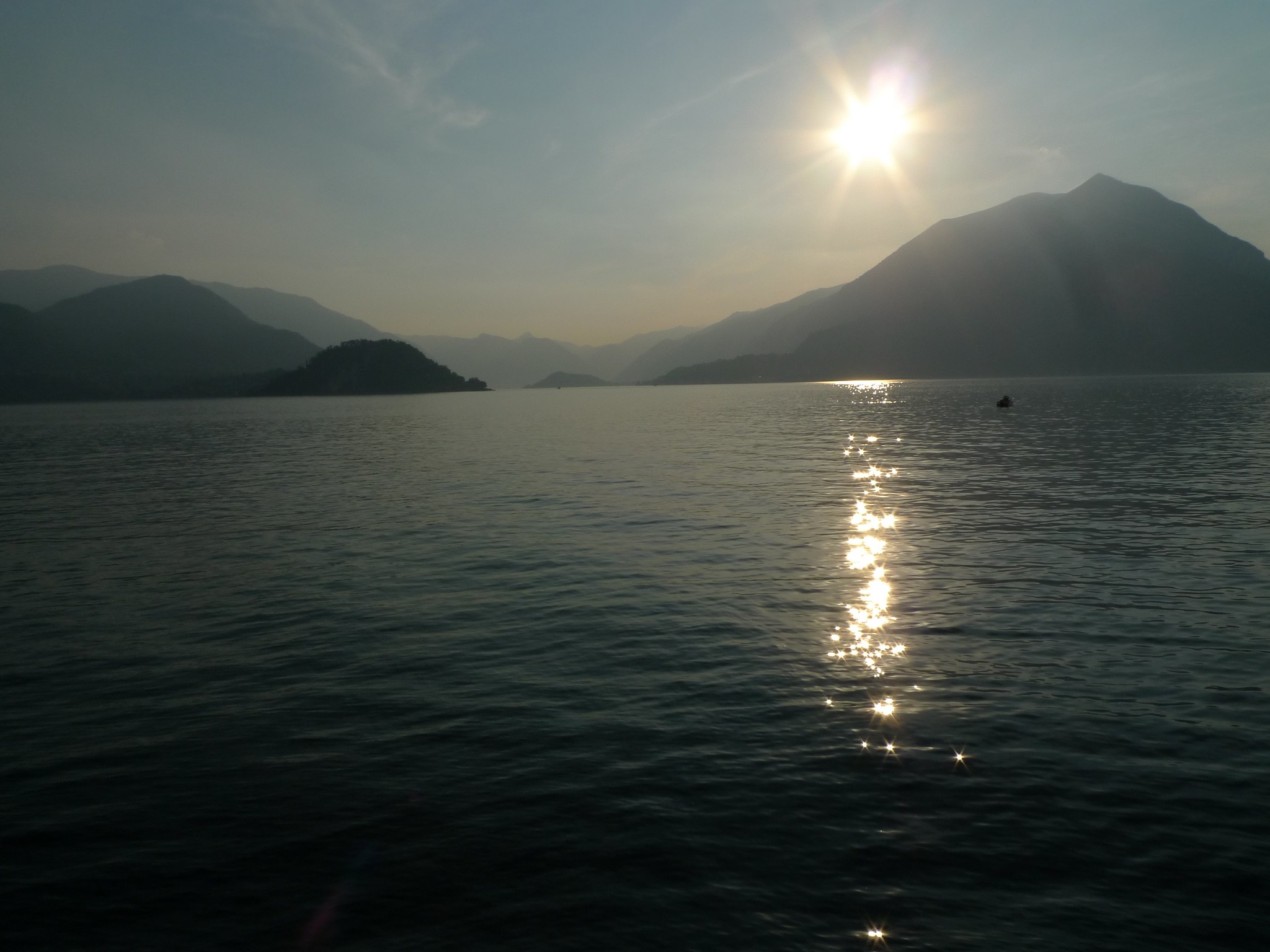It’s been a busy few weeks, and that seems like a good excuse for my lack of posts. Since coming back from Scotland, I’ve been to:
-
Paris, for our bi-monthly Planck Core Team meetings, discussing of the state of the data from the satellite, and of our ongoing processing of it;
-
Cambridge, for yet more Planck, this time to discuss the papers that we as collaboration will be writing over the next couple of years; and
-
Varenna, on Lake Como in northern Italy, for the Passion for Light meeting, sponsored by SIF (the Italian Physical Society) and EPS (the European Physical Society). The meeting was at least in part to introduce the effort to sponsor an International Year of Light in 2015, supported by the UN and international scientific organizations. My remit was “Light from the Universe”, which I took as an excuse to talk about (yes), Planck and the Cosmic Microwave Background. That makes sense because of what is revealed in this plot, a version of which I showed:

This figure (made after an excellent one which will be in an upcoming paper by Dole and Bethermin) shows the intensity of the “background light” integrated over all sources in the Universe. The horizontal axis gives the frequency of electromagnetic radiation — from the radio at the far left, to the Cosmic Microwave Background (CMB), the Cosmic Infrared Background (CIB), optical light in the middle, and on to ultraviolet, x-ray and gamma-ray light. The height of each curve is proportional to the intensity of the background, the amount of energy falling on a square meter of area per second coming from a particular direction on the sky (for aficionados of the mathematical details, we actually plot the quantity νIν to take account of the logarithmic axis, so that the area under the curve gives a rough estimate of the total intensity) which is itself also proportional to the total energy density of that background, averaged over the whole Universe.
Here on earth, we are dominated by the sun (or, indoors, by artificial illumination), but a planet is a very unusual place: most of the Universe is empty space, not particularly near a star. What this plot shows is that most of the background — most of the light in the Universe — isn’t from stars or other astronomical objects at all. Rather, it’s the Cosmic Microwave Background, the CMB, light from the early Universe, generated before there were any distinct objects at all, visible today as a so-called black body with temperature 2.73 degrees Kelvin. It also shows us that there is roughly the same amount of energy in infrared light (the CIB) as in the optical. This light doesn’t come directly from stars, but is re-processed as visible starlight is absorbed by interstellar dust which heats up and in turn glows in the infrared. That is one of the reasons why Planck’s sister-satellite Herschel, an infrared observatory, is so important: it reveals the fate of roughly half of the starlight ever produced. So we see that outside of the optical and ultraviolet, stars do not dominate the light of the Universe. The x-ray background comes from both very hot gas, heated by falling into clusters of galaxies on large scales, or by supernovae within galaxies, along with the very energetic collisions between particles that happen in the environments around black holes as matter falls in. We believe that the gamma ray background also come from accretion onto supermassive black holes at the centres of galaxies. But my talk centred on the yellow swathe of the CMB, although the only Planck data released so far are the relatively small contaminants from other sources in the same range of frequencies.
Other speakers in Varenna discussed microscopy, precision clocks, particle physics, the wave-particle duality, and the generation of very high-energy particles of light in the laboratory. But my favourite was a talk by Alessandro Farini, a Florentine “psychophysicist” who studies our perception of art. He showed the detailed (and extremely unphysical) use of light in art by even such supposedly realistic painters as Caravaggio, as well as using a series of optical illusions to show how our perceptions, which we think of as a simple recording of our surroundings, involve a huge amount of processing and interpretation before we are consciously aware of it. (As an aside, I was amused to see his collection of photographs with CMB Nobel Laureate George Smoot.)
And having found myself on the shores of Lake Como I took advantage of my good fortune:
OK, this post has gone on long enough. I’ll have to find another opportunity to discuss speedy neutrinos, crashing satellites (and my latest appearance on the BBC World News to talk about the latter), not to mention our weeklong workshop at Imperial discussing the technical topic of photometric redshifts, and the 13.1 miles I ran last weekend.
